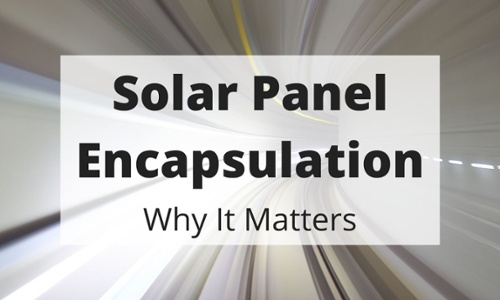
Say you are in the market for a solar panel. You buy two competitive options and begin to test different aspects.
You stage a test and determine what product has the most real-world output.
You then see which repels water and stands up to the elements best.
Finally, you determine which has the most flexibility and makes sense for your application.
Think you’ve taken all important factors into account?
Think again.
Lamination affects everything you test and is an incredibly important piece of the solar-build puzzle that is often neglected or misunderstoodentirely.
It is a balancing act ensuring the qualities needed in a particular product while maintaining as many other desirable traits as possible.
Important factors in lamination are optical transmission, lifetime, ease of maintenance, ease of manufacture, and cost. In some applications, dimensional stability in various temperatures is also critical.
The most common premium top film for solar is ETFE, a Teflon-like material with high optical transmission (typically above 96%). Its Teflon-like characteristics make it self-cleaning and very environmentally stable, leading to long service life.
It is among the most expensive potential laminates, and the same characteristics which make it self-cleaning make it difficult to bond to the solar cell, requiring special treatment and adhesives. It balances having relatively poor dimensional stability by being quite soft and easily held in place by other panel layers.
On the other side of the spectrum is PET or basic polyester. Cheap, plentiful, and easy to bond to, polyester is a go-to top film for lower-cost products and applications.
Polyester has a considerably lower optical transmission (typically 85-90%), poor environmental stability leading to yellowing and cracking after prolonged outdoor exposure, and minimal self-cleaning characteristics leading to higher maintenance needs in some environments.
While these are the two most common top films, there are a variety of other options for top films with their own strengths and drawback, including PVDF and FEP, with similar characteristics to ETFE but different challenges in workability and material cost.
Yet another option is PEN, a type of polyester that is durable but more expensive and challenging to bond to.
Additionally, while the top film is critical in the lamination stack, other layers also impact the panel's cost and performance, including top and bottom adhesives and the bottom protective laminate.
Optical transmission is critical for the top adhesive's ability to adhere to the top film, solar cell, and bottom adhesive. Top adhesives also frequently have UV blockers and stabilizers to protect layers below them from UV light degradation and ensure the adhesive layer's longevity.
Other important characteristics include laminating temperature, thermoplastic vs. thermal set, damp heat resistance, and layers in the laminate stack typically don't require high optical transmission or UV resistance due to protection by the layers above but need to hold up to humidity and other environmental factors.
Do you need a solar partner who will help you through consultation, collaboration and production?
Someone who will ask the right questions and determine the best solution for your unique application?
We are that partner, and we would love to chat with you.
We look forward to hearing from you!
Contact us or leave a comment below.